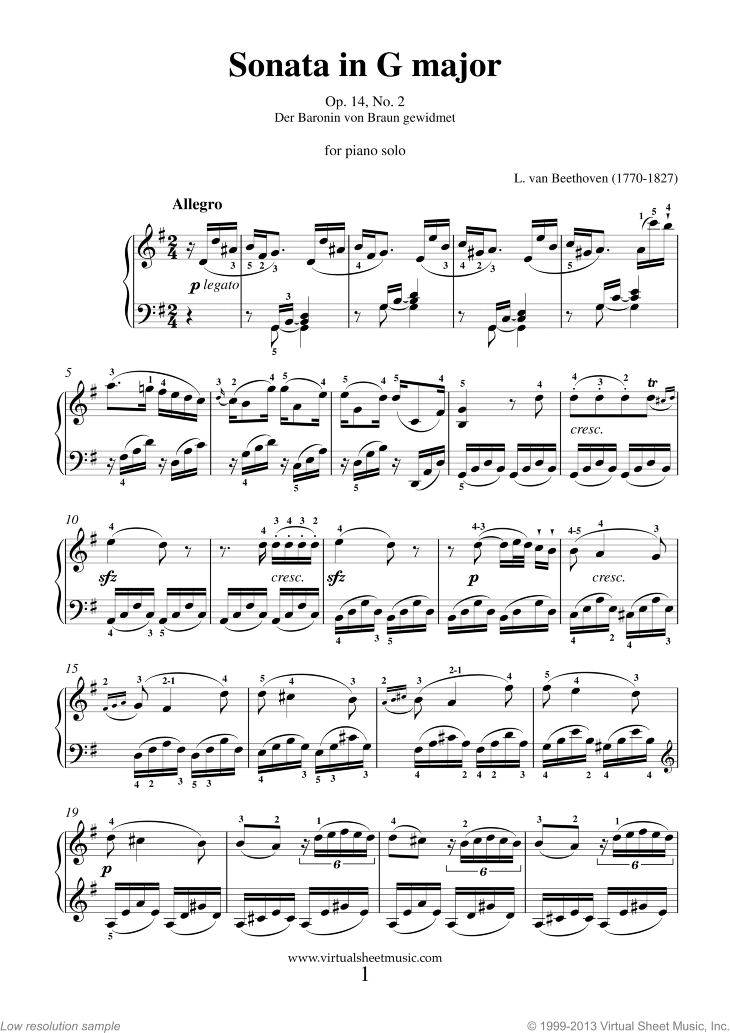

Even today, two hundred years later, its ferocity is astonishing." Of the final movement, Charles Rosen has written "it is the most unbridled in its representation of emotion. The writing has many fast arpeggios and strongly accented notes, and an effective performance demands lively and skillful playing.

1 and later on in Opus 101) placement of the most important movement of the sonata last. The stormy final movement (C ♯ minor), in sonata form, is the weightiest of the three, reflecting an experiment of Beethoven's (also carried out in the companion sonata, Opus 27, No. Franz Liszt described the second movement as "a flower between two chasms." The slight majority of the movement is in piano, but a handful of sforzando's and fp's helps to maintain the movement's cheerful disposition. The second movement is a relatively conventional scherzo and trio, a moment of relative calm written in D-flat major, the enharmonic equivalent of C ♯ major, the more easily-notated parallel major of C ♯ minor.
#Ludwig van beethoven piano sonata no. 14 how to#
The movement has made a powerful impression on many listeners for instance, Berlioz said of it that it "is one of those poems that human language does not know how to qualify." The work was very popular in Beethoven's day, to the point of exasperating the composer himself, who remarked to Carl Czerny, "Surely I've written better things." Allegretto The movement is played pianissimo or "very quietly", and the loudest it gets is mezzo forte or "moderately loud". A melody that Hector Berlioz called a "lamentation", mostly by the right hand, is played against an accompanying ostinato triplet rhythm, simultaneously played by the right hand. The movement opens with an octave in the left hand and a triplet figuration in the right. The first movement, in C ♯ minor, is written in an approximate truncated sonata form. He wanted a prelude, an introduction, not a proposition.” Beethoven rebelled against this determinative quality in the first movement. which succeeding movements could supplement but not change. In his analysis of the Moonlight sonata, German critic Paul Bekker states that “The opening sonata-allegro movement gave the work a definite character from the beginning. To be sure, the deviation from traditional sonata form is intentional. Instead, the Moonlight sonata possesses an end-weighted trajectory with the rapid music held off until the third movement. īeethoven included the phrase "Quasi una fantasia" ( Italian: Almost a fantasy) in the title partly because the sonata does not follow the traditional movement arrangement of fast-slow-fast. The name "Moonlight" Sonata derives from an 1832 description of the first movement by music critic Ludwig Rellstab, who compared it to moonlight shining upon Lake Lucerne.

It is one of Beethoven's most popular sonatas. It is rumored to be dedicated to his pupil, 17-year-old Countess Giulietta Guicciardi, with whom Beethoven was, or had been, in love. 2, by Ludwig van Beethoven, popularly known as the Moonlight Sonata ( Mondscheinsonate in German), was completed in 1801. 14 in C ♯ minor "Quasi una fantasia", op.


 0 kommentar(er)
0 kommentar(er)
